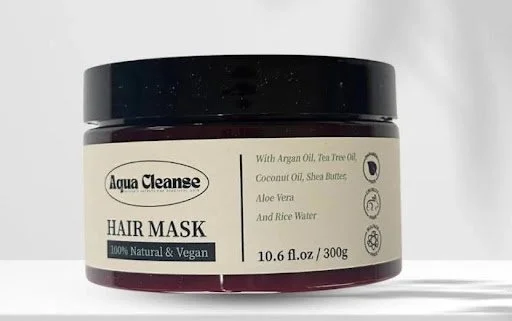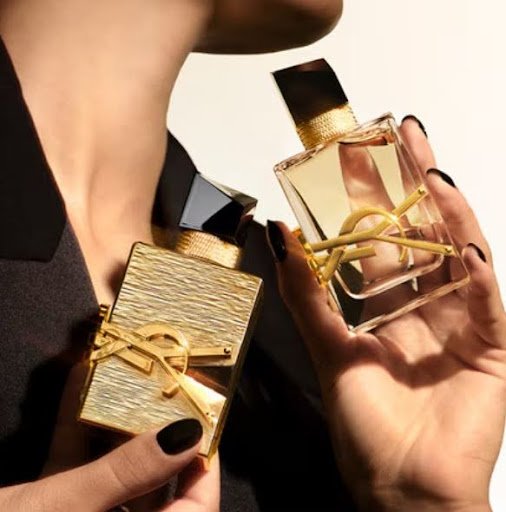The six changes I made this year to be more sustainable and how they honestly went
Perhaps partly due to the new-hippy-environmental-vlogger-Coachella-tote bag-loving aesthetic, there is a growing feeling among some that sustainability is somehow the sole pursuit of the wealthy. However, this really isn’t the case. Of course, it is a privilege to be able to live a completely vegan, zero waste, all-natural lifestyle (somehow) and it is a right generally reserved for celebrities and Youtubers.
However, the idea that if you are not being sustainable in 100% of your choices, 100% of the time, then it is not worth trying at all is inherently a false one. Our planet would be much better off if 80% of us made one change than if 1% made 80 changes. The idea that we have to make a choice between cost and our conscious is another falsehood. Almost all of the changes I mention here have saved me money in the long run. It’s simple economics- switching from a disposable product you have to buy every month to one you have to buy every six months or even only once makes sense even if it appears to be more expensive in a side by side comparison.
The Safety Razor
According to the EPA, over 2 million razors are thrown away a year, mostly into landfill. And that doesn’t even include the impenetrable plastic packaging it comes in. There are a few solutions to this problem. The most obvious, of course, is to just stop shaving. I am all for this option - the idea that some people still shave every couple of days no matter what they are wearing (even in the Winter?) is still a strange one to me. However, I would miss that silky-smooth post-shave feeling and little confidence boost it provides. Making sustainable choices is all about, well, choices and not denying yourself every pleasure due to eco-guilt. I recommend going for a safety razor with a butterfly open as this worked for this razor beginner and is generally fairly affordable.
Another added perk of this more permanent shaving solution is the advertising. I had grown slightly tired of the faux-empowering sexy, pink, specially designed for the fairer sex, range of identical chunks of plastic and blades. For the most part with safety razors, they are unisex, focused on function rather than an aesthetic and are still often also fairly stylish. Yes, they are generally sharper than your average disposable razor and so you have to be a little more careful. There is also the initially daunting task of changing out the razor blades every so often. Once you get over the whole holding a razor blade thing, however, it’s a cinch. (I can report that since the switch I have a perfect no-nick record so far!)
Sanitary pads
I understand this next one might be a tricky one. People often prefer to stick to what they know when it comes to period products and at least some of you are probably putting your hands over your eyes and blindly scrolling away from this section. (Be aware that if you do choose to skip this section I will be silently judging you for not being willing to read one paragraph about someone else’s experience. I’ll know, just saying.) Since menstrual products became disposable in the 1920’s, in an average lifetime, anyone who gets periods will throw away between 5 and 15 thousand of these essential products - the majority of which will end up in a landfill. That’s a heavy cost to take care of an unavoidable problem. Like many of the products mentioned here, the solution is to look back to a less disposable and plastic dependent time.
However, instead of reaching for ye olde rags, many companies have taken up the mantle to produce a modern equivalent. Washable pads and period underwear have become extremely popular within the last couple of years and offer a practical solution. These pads can be hand washed or put in the machine, clip easily into your underwear and are generally much more comfortable than paper pads due their soft material and the reduction in chaffing and bunching. While some may get a little squeamish at the idea of sticking your pads in with your normal load, you honestly get used to it (they can be folded up and clipped in place if you want to be extra discreet) and you can always hand wash if the idea is still too much. Just think of this - in theory, you will never have to buy pads again. (You can also get washable cotton tampons, but this was a step too far for this squeamish eco-warrior).
Toothpaste Tablets
Let’s be honest, I can’t decide whether using toothpaste in tablet form makes me feel super futuristic and high-tech or if they just make me feel like a weirdo. Either way, they solve a problem - the plastic tubes and cardboard boxes regular toothpaste comes in. Toothpaste tabs contain less water than toothpaste in a tube and generally come in recyclable or biodegradable packaging and so is better for the environment while also being lighter and easier to travel with. Much like shampoo, tubed toothpaste use SLS to make their product foam. However, this can irritate your skin and serves no actual purpose for teeth cleaning. It can be a little disconcerting at first when the tablet doesn’t foam but it works just the same. All you do is chew the tablet into a paste and then brush away to your heart's content. Much like many of the switches mentioned here, it takes a little getting used to and requires a little experimentation. (I was advised however, to be wary of some of the charcoal toothpaste tablets as they can be abrasive to your enamel.) Despite this, it is a great alternative and tends to save on waste as you use the exact same amount each time - one tablet. No more wrestling with the tube to get those final drops or splattering the mirror with an overzealous first squeeze.
Find them at Boots for £6
Handkerchiefs
According to Kimberly-Clark (you may remember them from every public toilet paper dispenser you have ever seen - they also own Kleenex so we can assume they know what they are talking about on all things tissue) the average person blows their nose 265 times per year. Even imagining you use each tissue until it is more snot than paper (sorry for that image by the way) that is still a lot of tissues. Each of the hundreds of tissues you excrete into over the course of your lifetime requires trees to be cut down, water and electricity to be used, needs to be bleached white so you can see in detail everything you just catapulted from your face and produces a fair amount of CO2 in its transportation and packaging.
But what can you do? We are all human. We all sneeze and always wiping our nose with our sleeve or a nearby child will start to attract unwanted attention. Enter the must-have for any period drama props department - the handkerchief. They can be purchased fairly inexpensively (or just raid your grandmother’s supply) and are often much softer on your skin than your average paper tissue. Moving towards a less disposable option is always a good idea when you want to be more environmentally conscious, they come in literally any colour or design you could imagine and popping them in the wash whenever you do a load requires no extra effort. I am truly thinking of starting a campaign to make handkerchiefs the latest high-fashion accessory. Who is with me? No? Guess not then. Well, until then use your handkerchiefs discreetly and safe in the knowledge that you are doing your bit. (And yes, there are still Ladies and Men’s handkerchiefs for some reason, even though we both have the same noses). I ended up switching to Ladies because the Men’s wouldn’t fit in my ridiculously small Lady pockets.
Shampoo Bars
As refillable shampoo bottles are still, at present, fairly few and far between, I decided to look outside the box (or the bottle) for an alternative to plastic heavy and often non-recyclable shampoo. I was pleasantly surprised (and a little too excited) by the great variety of flavours, specialties and smells available. (And switching from a liquid also means they are travel friendly!)
Generally, companies who make shampoo bars, as they are usually eco-conscious companies, tend to be extra diligent with what they put in their products and how they are made. For example, the bar I use is cruelty-free, free from nasty SLS and is not made with Palm Oil. It is worth checking but as shampoo bars have the opportunity to use less traditional ingredients, they tend to take this opportunity to make careful choices. Because they are more concentrated than liquid shampoo, they also last longer and tend to be more cost effective. Much like any change in a hair or skincare routine, it will take a little while for your hair and scalp to get used to the bar. Liquid shampoos often create a lot of build up and even sometimes coat your hair to make it appear shiny. It will take a few washes to clear all of this out and get your hair back to its default settings. Don’t be scared if you had forgotten what that looked like. I promise you will love it, or at least can still use all sorts of gel or heat or whatever people use to style it after. Clearly I am a hair expert and your hair will still thank you.
In the meantime, you can discover your perfect technique for using the bar. (Shampoo bar that is, although I could always use more practise properly utilising a bar). As shampoo bars don’t use the lathering chemicals that regular shampoos do, it can feel like you are not really doing anything at first. After a little experimentation, I have found that putting a mixture of baking powder and peppermint extract on wet hair beforehand really helps get the bar going and the bubbles flowing. (I also leave the baking powder and peppermint on my hair for a few minutes beforehand as it is great for dandruff and is extra tingly!) Then you just wet the bar a little and glide it over your head like a comb. You tend to need to rinse a little more than normal but I have found the key with shampoo bars is experimentation and persistence. Super devoted and brave readers can even attempt to make their own if they dare! Let me know how that goes - I’ll be cowering over here in my craft ineptitude.
Poore and Nemecek (2018), Science. (yes I found a graph)
Oat Milk
Unfortunately, when it comes to considering the environmental impact of your food choices things tend to get a little more complicated. Unlike the other changes I have mentioned, food switches often involve a greater number of variables and a little more research. Making an informed choice is often a bit of a balancing act. For example, if you can direct your eyes to the beautiful bar chart above by Poore and Nemecek you will see the three main variables to consider. (Of course, there are many more but let’s leave them to Poore and Nemecek for now - they are published in Science so we know they know what they are talking about) While almond milk appears to be the least environmentally greedy on two out of three categories, it is beaten only by the juggernaut diary in water use. To make a single glass of almond milk, it takes over 130 pints of water - that’s more than the average shower. (If you are curious about how your food choices stack up environmentally then check out this handy calculator).
Aside from the sustainability balancing act, switching to oat milk has also helped me greatly reduce my waste. As a person who consumes a fairly small amount of milk (just black tea for me please, also the idea of drinking a glass of milk neat makes me visibly shutter - sorry milk lovers) buying milk became difficult once I was living alone or with flatmates. Even if I brought the smallest carton I could find, I simply couldn’t consume it all before it went off. Short of stealing those tiny cartons you see in cafés or sneaking dribbles from my flatmates’ supply (sorry to anyone who has ever lived with me) I just ended up not buying it. But this was not a sustainable solution (see what I did there). I missed my midnight hot chocolates (I spit on your hot water-based hot chocolates- I’m a serious hot chocolater) and 3pm mug brownies.
Oat milk ended up being my perfect solution as it lasts way longer than cow’s milk, it satisfied my environmental itch and I love me some oaty goodness. When making a switch like this you must also, of course, consider taste as there is no point switching if you hate it and immediately want to switch back. A lot of cow’s milk alternatives attempt to lure consumers away from the diary by making their product taste as neutral or faux-milky as possible. This technique is also often used by meat alternative products who try to replicate the meat flavour. This can work but isn’t for everyone - there is a clear distinction between vegetarian food and food that is meant to be a substitute for meat. For example, although I am not a full-blown veggie, probably about 60% of my meals are technically vegetarian because I just enjoy vegetarian food. However, I would never go near anything which proclaims itself chicken or beef-style. (Seriously, who thought that was a good idea to describe food in genres?) The same applies to milk alternatives. The simple truth is: I enjoy oat milk because it is undeniably and proudly oaty, and I like oats. (I am literally salivating thinking about an oat and raisin biscuit now). Many other kinds of milk try to avoid a prominent flavour because they know this will bring them further away from the original cow’s milk taste people know and this can often result in a watery mess. When making a switch it’s all about finding something that works for you and I have found its best not to simply try to directly replace one product with another because it will never quite measure up. I have also found that with food-based switches, the change that felt so massive when you first tried it is barely noticeable after a few weeks.
Really it's all about experimentation - taking a look at your choices, working out whether you could make a more sustainable choice and then giving it a go. If it isn’t or you then there is bound to be another switch you can make or a better alternative for you out there.













